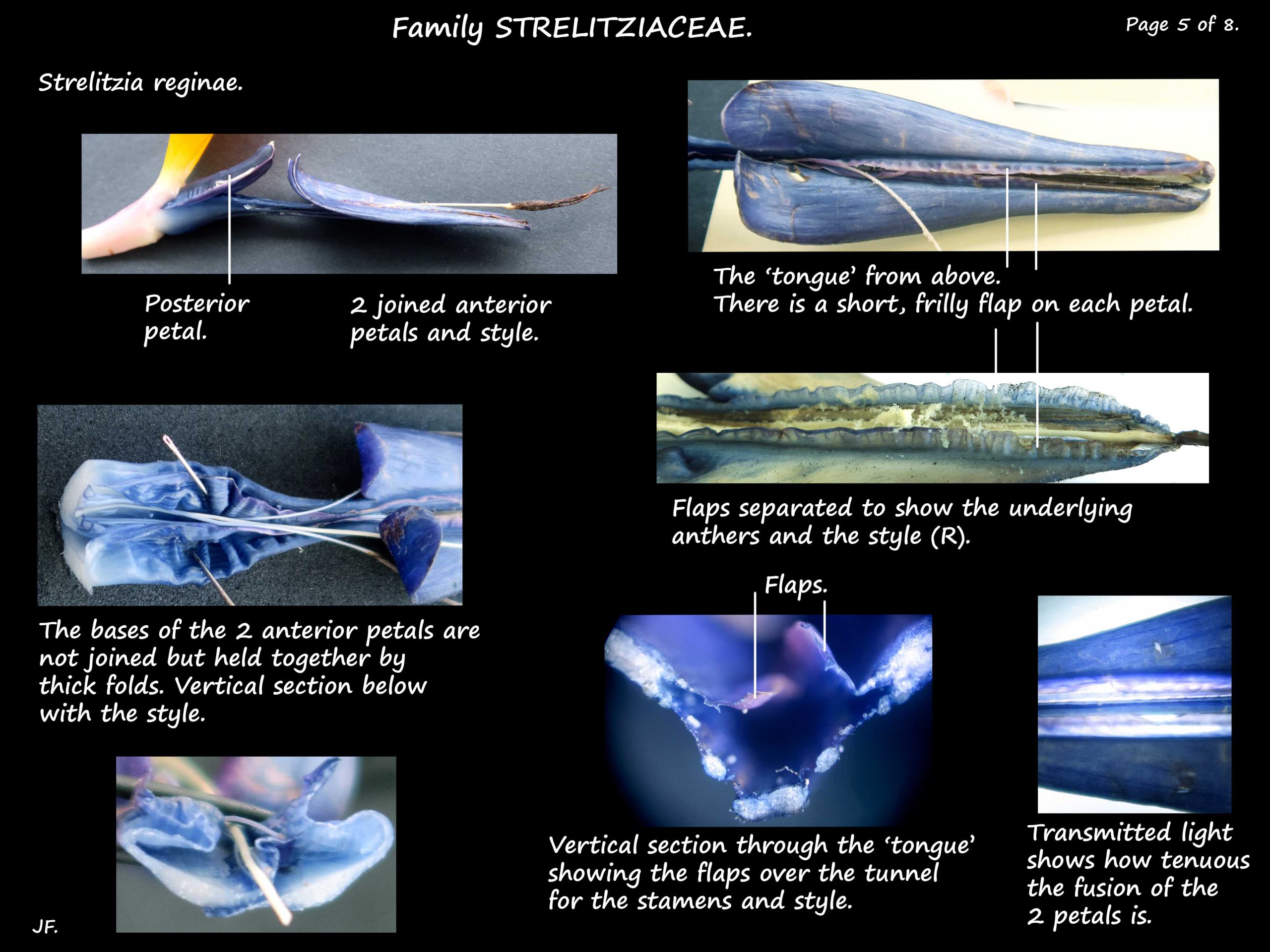Strelitzia reginae – Bird of Paradise.
The Bird of paradise or Crane flower is commonly seen in gardens.
The evergreen plants form dense clumps with basal leaves to 1.5 or 2 m high.
The dark green leaves grow from fleshy rhizomes (underground stems).
Strelitzia reginae never form trunks. Their leaves are in 2 ranks.
Petioles are up to 1 m long and the ovate to oblong blades are up to 30 cm wide.
There are close pinnate veins (penniveined) and the margins may be wavy.
Inflorescences, on long stalks, are held above the leaves.
Each has one or more large, strong, horizontal, boat-shaped bracts or spathes up to 20 cm long.
This is green and/or blue-green, often with a reddish upper edge.
Each bract holds a number of flowers opening in succession although a few may be open at once.
Each flower is on a short, white and/or reddish stalk.
There are 6 tepals in 2 whorls of 3 (sepals and petals).
The 3 spreading, keeled, outer tepals or sepals, about 7 cm long, are a brilliant orange.
The 2 posterior ones are fairly erect and the medial or anterior is roughly horizontal.
The anterior or medial sepal may be the last to emerge from the inflorescence bract.
The 3 inner tepals, or petals are a vivid blue.
The 2 anterior petals are the same length as the sepals.
They are joined to form a narrow, horizontal, arrowhead-shaped ‘tongue’.
The third petal, the medial or posterior, is much smaller.
The ‘tongue’ encloses the 5 stamens and the style.
Stamens have long thin white filaments and long linear anthers with white pollen.
Anthers are basifixed and open via longitudinal slits.
The inferior ovary, of 3 fused carpels has 3 locules each with numerous ovules.
Each carpel has an apical style and these unite to from a single style that lies in the ‘tongue’.
At the end of the ‘tongue’ the style divides into 3 again and the stigmas lie just outside the tip of the ‘tongue’.
There are nectaries on the carpels and nectar in the anterior or lower sepal.
When a bird sits on the spathe to get nectar the lips of the ‘tongue’ spread apart enough
for the anthers and stigma to be exposed.
The fruit are woody, 3 chambered, loculicidal capsules.
The numerous small black or brown seeds have a hairy, orange aril.
There are a number of cultivars with slightly different colours.
J.F.









